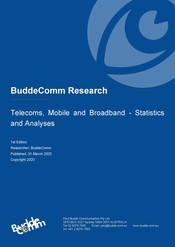Australia - Data Centres

Last updated: 6 Nov 2018 Update History
Report Status: Archived
Report Pages: 53
Analyst: Phil Harpur
Synopsis
It took over 20 years for the data centre market to reach its current position. The arrival of cloud computing, Big Data, M2M and IoT allowed for a large range of new services and applications, especially aimed at small and medium organisations.
The data centre market includes telehousing facilities, co-location facilities, cloud and IT services, content hosting, connectivity and interconnection. They are important for a range of business and government applications including new developments of cloud computing and the Internet of Things (M2M).
Currently the developments are highly centralised in the capital cities, but a more decentralised trend is expected to develop over time. Sydney datacentres currently offer the primary location for hubbing traffic for content and cloud providers, as well as content delivery networks. However Melbourne will gain further importance as the second major content hub for Australia as new submarine cable projects bring to market the necessary connectivity routes.
Data centre customers are migrating from co-location services and managed hosting to cloud services. Cloud providers are the fastest growing segment of most Australian data centre providers.
Government continues to increase in maturity in their understanding of cloud technologies, how to use cloud to the best of their advantage, and how to optimize their existing infrastructure.
Major global cloud service providers have huge growth expectations for Asia Pacific region and these providers are investing their capital to reflect their rapid growth.
In response to this growth, a number of existing major Australian data centre providers such as Digital Reality and Metronode and new regional providers such as AirTrunk are ramping up local data centre capacity.
Australia has progressed to now be one of the four major sub-markets for data centres in Asia alongside Singapore, Hong Kong and Japan. Greater diversity however has led to the fact that it is now harder to serve the entire region from one location. The Asia-Pacific region is currently undergoing very strong wholesale colocation growth driven by large-scale global cloud providers including Amazon Web Service (AWS), Google, Microsoft and IBM as they expand aggressively in major hubs.
This report overviews the different forms of data centres and gives an insight into the trends occurring in it, and the major players in the sector.
Key developments:
- Emergence of Melbourne as a second key Australian data centre hub.
- AirTrunk opens a hyperscale data centre in Western Sydney.
- Global data centre provider Equinix acquires local data centre provider Metronode.
- Cloud-based collaboration software provider Freshworks opens a datacentre in Sydney.
Companied covered in this report include:
Canberra Data Centre (CDC), Australia Data Centres, Telstra, Optus, HP, Macquarie Telecom, Datacom Systems, Global Switch, Fujitsu, Hewlett Packard, Equinix, NextDC, Polaris, Digital Realty, IXnet, Metronode, Nextgen Networks, Vocus, AirTrunk, Freshworks.
Related Reports
- Australia - Telecoms, Mobile and Broadband - Statistics and Analyses
- Australia - Data Centre Market
- South Pacific Islands - Telecoms, Mobile and Broadband - Statistics and Analyses
- Samoa - Telecoms, Mobile and Broadband - Statistics and Analyses
- Papua New Guinea - Telecoms, Mobile and Broadband - Statistics and Analyses
- New Zealand - Telecoms, Mobile and Broadband - Statistics and Analyses
- French Polynesia - Telecoms, Mobile and Broadband - Statistics and Analyses
- New Caledonia - Telecoms, Mobile and Broadband - Statistics and Analyses
- Vanuatu - Telecoms, Mobile and Broadband - Statistics and Analyses
Share this Report
TMT Intelligence
A platform to scale your intelligence tasks
Monitor critical insights with our AI-powered Market Intelligence Platform gathering and analyzing intelligence in real time. With AI trained to spot emerging trends and detect new strategic opportunities, our clients use TMT Intelligence to accelerate their growth.
If you want to know more about it, please see:
Research Methodology
BuddeComm's strategic business reports contain a combination of both primary and secondary research statistics, analyses written by our senior analysts supported by a network of experts, industry contacts and researchers from around the world as well as our own scenario forecasts.
For more details, please see:
More than 4,000 customers from 140 countries utilise BuddeComm Research
Are you interested in BuddeComm's Custom Research Service?
Hot Topics
News & Views
Have the latest telecommunications industry news delivered to your inbox by subscribing to BuddeComm's weekly newsletter.